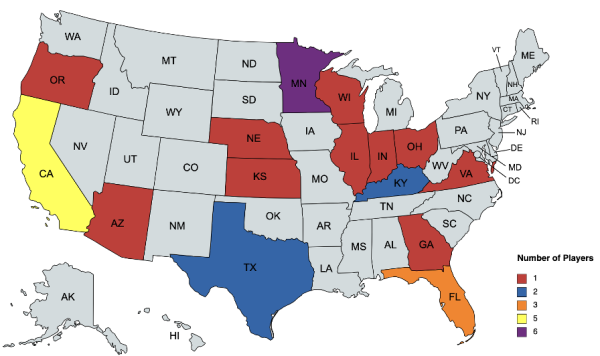The University of Minnesota’s School of Dentistry hosted its Give Kids a Smile event (GKAS) Feb. 3, providing free dental care for 64 children.
This February, which is children’s dental health month, marked the 20th anniversary of GKAS.
According to Dr. Teresa Fong, a clinical associate professor and director of the pediatric dental clinic at the University, GKAS is supported by the American Dental Association and the Minnesota Dental Association.
“Everyone in every dental office is invited to have a Give Kids a Smile event,” Fong said. “It’s a well-known event.”
Miranda Thacker, a third-year dental student, helped lead the event and said over 200 volunteers saw children for exams and cleanings. They also came up with treatment plans.
Treatment plans include sealants, protective sealants, crowns and anything the children need which would normally get done at a dental office, according to Thacker.
“We do treatment, if the child needs any, and if they are willing to do it the day of,” Thacker said. “We also have grants and some fundraising we did to pay for their continued care beyond the event.”
Elizabeth Isaacson, a second-year dental student, said she helped run a t-shirt and sweatshirt sale through the dental school and found corporate sponsors to provide scholarships for the children to receive the care they needed.
According to Thacker, there are various barriers children face in receiving dental care.
“Some of the big barriers that come to mind are insurance and financial barriers,” Thacker said. “Dental offices also tend to operate from eight to five on Monday through Friday, and that is when parents are working and kids are in school.”
An interpreter service donated iPads for the event since there was a high volume of Spanish-speaking patients, according to Thacker.
Fong said there was also a MNsure navigator present on the day of the event so families with no insurance had the opportunity to speak to someone to see if they qualified.
According to Fong, to ensure families found out about the event, students found several avenues to get the word out.
“I make sure we sign up through the Minnesota Dental Association, and that has some statewide press, so some people find out about the event through that,” Fong said.
Isaacson said seeing children coming in crying and leaving with smiles on their faces is one of the most rewarding aspects of the event.
“What sets the event apart the most is being able to establish a dental home for these families and for these kids to know that they can come back and get the care they deserve and need,” Isaacson said.
Isaacson added the event helped her play a part in establishing a lifetime of healthy dental work and a happy smile for these children.
“Anytime you see a child in a dental capacity, you are forming a lifelong impression in terms of what oral health is and how they can take care of themselves,” Thacker said.
Thacker added there was an educational component to the event, beyond just the physical care the children received. The School of Dentistry provided children with materials to maintain oral health at home, while dental hygiene students explained the importance of brushing.
Thacker also mentioned the further impact of the GKAS event on the community.
“We are teaching them how to be lifelong, healthy individuals, and they’re gonna impact other people around them like their siblings and classmates,” Thacker said. “I think that is one of the beautiful things about pediatric dentistry.”

